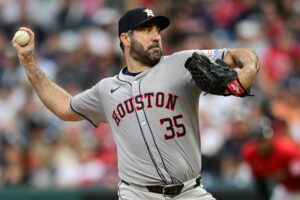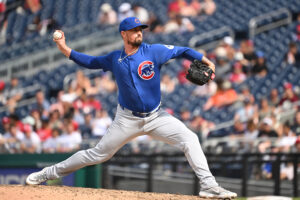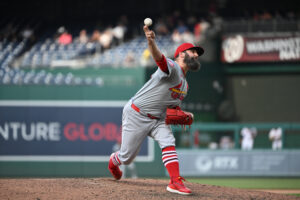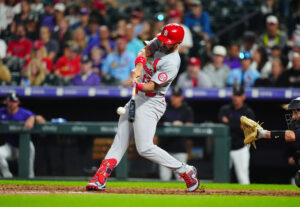The dawn of the 1920s saw a new era form in Major League Baseball. The dead balls of the past two decades were gone. Offensive totals began leaping across both leagues. In 1919, Gavvy Cravath led the National League with 12 homers. In 1920, Cy Williams hit 15. But these paled in comparison to baseball’s new superstar: Babe Ruth. His 29 homers in ’19 set a league record. He topped that with a whopping 54 the next season. In short, homers were up, and fans were clamoring for more.
Unfortunately, almost none of the clamor surrounded Boston Braves games. The franchise experienced yet another decade of lows. Between six managers in ten seasons, the team posted a 603-928 record. They finished at or near the cellar eight times. Attendance was down severely, and nothing seemed to go right. The 1920s might have been roaring, but the Braves were simply sputtering.
1920s Boston Braves:
Slow Starts and Glimmers of Hope
The last heroes from the 1914 miracle team faded away in 1920. Manager George Stallings guided the Braves to a 62-90 mark in his final season. The offense was mediocre, turning in a .260 average with 23 home runs. They finished last in the league in runs scored (523) and seventh in just about everything else. Their OPS+ was 93. First baseman Walter Holke led them with a .294 average and 162 hits, but he was the lone bright spot. All of this backed up fading former star Dick Rudolph and an equally mediocre pitching staff. Right-hander Joe Oeschger managed to put together 15 wins. But the team ERA of 3.54 and an ERA+ of 85 spoke to their woes.
A new day dawned in 1921, starting with a new manager. Stallings was ousted in favor of Fred Mitchell. Mitchell had led the Chicago Cubs to the pennant just three seasons prior. With him at the helm, things did take a turn for the better. The team went 79-74. The offense grew substantially, posting a .290 mark. They leaped from last to third in runs scored and had 100 triples. However, while the offense made waves, the pitching made ripples. The team ERA was actually worse by a margin, but the ERA+ improved to 93. Oeschger posted a 20-win season, the first by a Brave since Dick Rudolph in 1915. All the starters finished above 10 wins, with Dana Fillingim and Jack Scott posting 15. But, the ERAs remained in the mid-3s, and they lead the league in walks (420).
A Huge Fall
That would be the high point of the decade. The next two seasons were dreadful, as the Braves experienced a massive fall from grace. 1922 saw them post their first 100-loss season in a decade. Oeschger went from a star to a miserable liability almost overnight. He dropped from 20 wins to six, posting a 5.06 ERA in the process. But that was only the beginning. The staff itself posted a mediocre 4.37 ERA and a 91 ERA+. The offense was unable to keep pace, putting together the worst average in the league (.263). 1923 was just as terrible, with the Braves losing 100 games again. Oeschger was even worse, but the staff did manage to improve their ERA slightly (4.21). Sadly, this was near the bottom of the league. The offense also finished last in nearly every category.
It was an unfortunate departure for Mitchell. He could not turn the floundering franchise around. New manager Dave Bancroft was thrown into the fire in 1924. On the bright side, right-hander Jesse Barnes posted a 15 win season with a respectable 3.23 ERA. However, awful seasons from Joe Genewich and Al Yeargin doomed the pitching staff. Yeargin posted a 1-11 record with an ERA over five. All of this led them to a team ERA of 4.47 and an ERA+ of 85. The offense was even worse. Stuffy McInnis proved to be the lone bright spot. Sadly, his .291 average could not pull them out of the basement. In short, it was back to 100 losses in yet another cellar-dwelling season for the Braves.
Turning the Corner?
But 1925 saw them turn a bit of a corner. Bancroft led them to a 70-83 mark while playing shortstop and batting .319. The offense had a respectable campaign, improving by leaps and bounds. They managed to raise their team average to .292. Their OPS+ was a steady 95. They finished fifth in hits (1,567), fourth in doubles (260), and fifth in triples (70). However, the pitching did not improve very much statistically. The ERA was lowered to 4.39, and the ERA+ hovered at 92. But, there was one major bright spot: right-hander Larry Benton. He led the team, posting a 14-7 record with a 3.09 ERA and a 130 ERA+.
Sadly for Bancroft, the next two seasons saw regression. 1926 was not as terrible as 1927, though the seeds of the cellar were planted. The offense dropped to a .277 average and a 92 OPS+. Bancroft and outfielders Jack Smith and Eddie Brown led the team. The player-manager hit .311, along with Smith. Brown posted a .328 average and a 115 OPS+. The team did lower its ERA to 4.01. Unfortunately, everyone else in the league lowered it as well. So the Braves wound up seventh in the category.
A Low Ending
Bancroft would have one last chance in ’27, but it was his worst since taking over. The team finished 60-94. Bancroft’s average finally fell, leaving Brown and new outfielder Lance Richbourg to carry the offense. The team actually improved to a .279 average, good for fifth. They also finished fourth in hits (1,498) and third in stolen bases (100). Unfortunately, the pitching went in the opposite direction. Staff ace Bob Smith posted a 10-18 record, and third starter Charlie Robertson only won seven games.
The Braves returned to the depths of despair at the end of the decade. 1928 was their worst season in the span, finishing 50-103. New manager Jack Slattery was ousted after an 11-20 start, replaced by Hall of Famer Rogers Hornsby. He was joined by fellow Hall member George Sisler. The two combined to hit .360 with 355 hits. Hornsby also led the team with 21 homers. Sadly, the pitching continued to suffer, with a team ERA near 5. They posted a dismal 80 ERA+ and a 1.559 team WHIP. Ironically, they bettered their record in 1929 while being worse in many respects. The team average of .280 was five points higher, yet last in the league. The team ERA rose to 5.12, yet their ERA+ improved to 91. In many cases, the 1920s Braves played a game of “keeping up with the Joneses.” Sadly, it was one they never won.
Main Photo:
Embed from Getty Images






